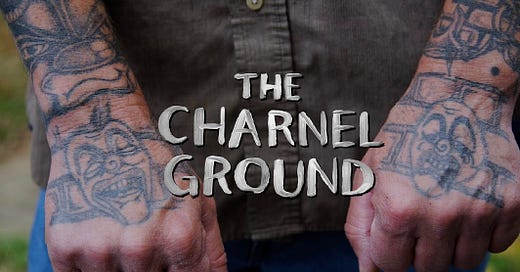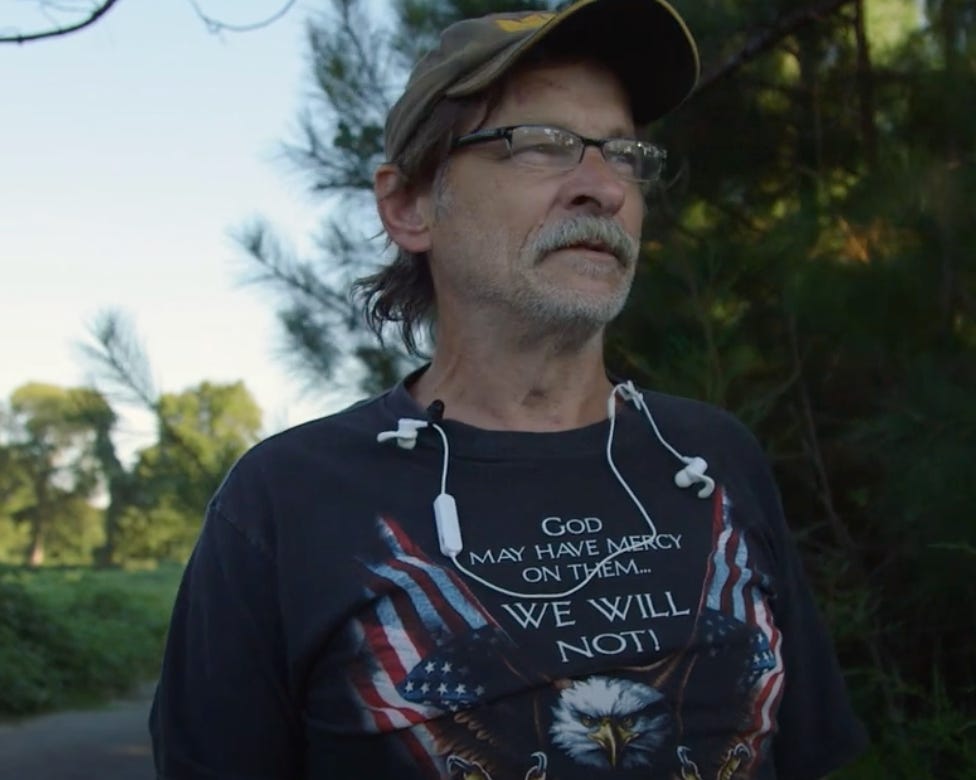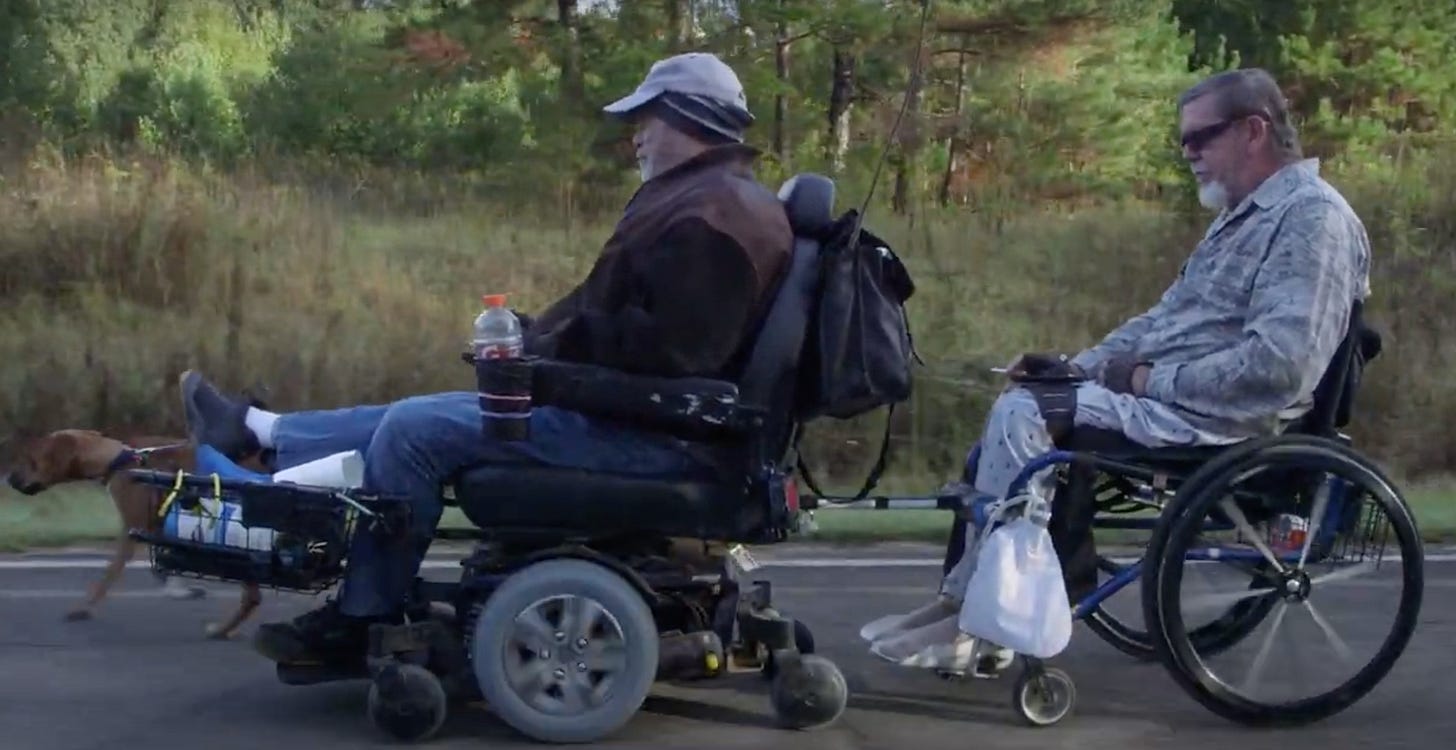The first time I watched this film, I cried. Even with all the reporting I’ve done on mass incarceration, the film’s intimacy, baring the most difficult parts of humanity— it got to me. The second time I watched it, I marveled at the beauty of the cinematography, the brilliant editorial choice to juxtapose wrenching stories of prison and abuse against the shimmering landscape of central Georgia. The third time I watched it, which was earlier this week, I decided to write about it because I want as many people as possible to see this film.
It’s called The Charnel Ground and I know the filmmakers well. Maura McNamara, my close colleague on a podcast project, made this work of art with her partner, Daniel Fox. I know the time and care they put into this project and it shows. This is not an ordinary film about incarceration. The razor wire and looming brick buildings are in the background, a decaying campus of central state hospital in Milledgeville. The 2000-acre site operated for almost 2 centuries as the world’s largest asylum or sanitarium, and also a prison. These days those institutions are one and the same.
“30 years I have longed to talk to somebody that would take the time and listen,” says one of the film’s main characters, a white-bearded, chain-smoking man named Hateley, before he lets out a quiet sob.
And that’s what this film is, an exercise in listening to people that society has long ignored, hidden away, shunned and forgotten. The film contains no narration and unfolds lyrically, almost poetically. Maura and Daniel spent months with the men in the film and built up trust for them to share their harrowing stories while they wander the campus, trying to make sense of their lives, left in tatters by decades of incarceration. The men are self-aware, awake to their status as outcasts, laying bare the cold reality of how society views them and everyone like them.
“To them, we’re all rapists, we’re all child molesters. I would say 98% see us as parasites,” says David as he lifts his shirt to show his torso covered in tattoos. “They don’t care if we live or die. They prefer that we die.”
The men are technically in a state re-entry program, living in “transitional housing” for one year after prison, but they have no transportation, no income, and no real structure to how they spend their time. Daniel and Maura met them while they roamed the grounds and struck up conversation. They recognized these men had incredible stories to share about a uniquely American experience: growing old during decades in prison, then thrust into some version of freedom that’s more like limbo or purgatory.
They are adrift, no longer in prison but not yet free, aimlessly floating in a space between prison lockdowns and life as free men. It’s a point in the cycle of incarceration that gets little attention, resources or care. These men have been dumped into a dumping ground, a haunting landscape of kudzu-covered, crumbling buildings. They speak freely about their traumas in prison, past abuse and horrific childhoods against the birdsong, miles of green and dappling sunlight. It is jarring to see these two worlds co-exist: the natural beauty of the deep south, and the man-made monstrosity of mass incarceration.
The film features 8 men, including Johnny, whose speech is slurred after surviving a stroke. Johnny recounts almost being killed in a prison assault but frames his survival as one of his many blessings. He hints at deep corruption, depravity and cruelty he witnessed, but amazingly, continuously steers himself back to personal accountability. “The things you do, come back around. We put ourselves here.”
He shares a piece of his artwork, a tiny house constructed with cardboard and paper, painted with coffee and wax. He started making the houses while in prison in 1980, a testament to the internal creativity that likely sustained him. He is the embodiment of resilience, the beauty and wisdom that humans contain and generously release in the face of oppression.
Maura recently explained the meaning of the film’s title. The charnel ground is a Buddhist concept: a place where unclaimed human bodies are left in various stages of decay, to rot or be eaten by animals. “Practitioners meditate there because it’s one of the most confronting environments you could place yourself in, and by witnessing it and not turning away in fear or disgust, it’s an opportunity to understand the nature of reality and deepen your ability for compassion,” Maura explained. The Buddhist nun Roshi Joan Halifax says charnel grounds exist metaphorically everywhere, in any place where there is suffering. In that sense, the world that these men wander is a charnel ground and this film is a meditation.
Maura and I talk a lot about what it means to be proximate, an intention that Bryan Stevenson teaches is necessary to eradicate injustice. “We need to find ways to engage and invest and position ourselves in the places where there is despair,” he says. I’ve tried to make getting proximate a practice in the work that I do writing about mass incarceration, and this film is a beautiful study in getting proximate.
“In our culture, not only is there extensive suffering, but there’s also very few tools given for us to acknowledge that,” Maura said. In the proximation the film allows, we are confronted with the complexities of harm and the harmed, and left to wonder what these men could have done with their lives if they had opportunities for healing instead of punishment.
Part of the joy of this film, for me, is the subversive act of catching these men in their down time, not through any official access point, but as they stroll to the store to buy a can of beer or soda, or meander through the trees, smoking and pondering their experiences, the shards of their lives. The challenge often faced by filmmakers and journalists who cover incarceration and its aftermath is getting something authentic and real.
When the state controls the narrative and exerts ultimate authority over the storytellers, the responses to questions are contained within that paradigm: that caging humans is necessary, that violence is normal, and that authoritarianism is needed to ensure public safety. The Charnel Ground skips all that performative bullshit and gets right to the heart of our punitive culture, told through the lived experiences of men who have survived, as they roam the detritus of a penal system in literal decay, at the end of the line of their lives.
You can watch the entire film on youtube here. Please consider supporting this beautiful work of art! Watch it, share it, tweet it. And let me know what you think.













